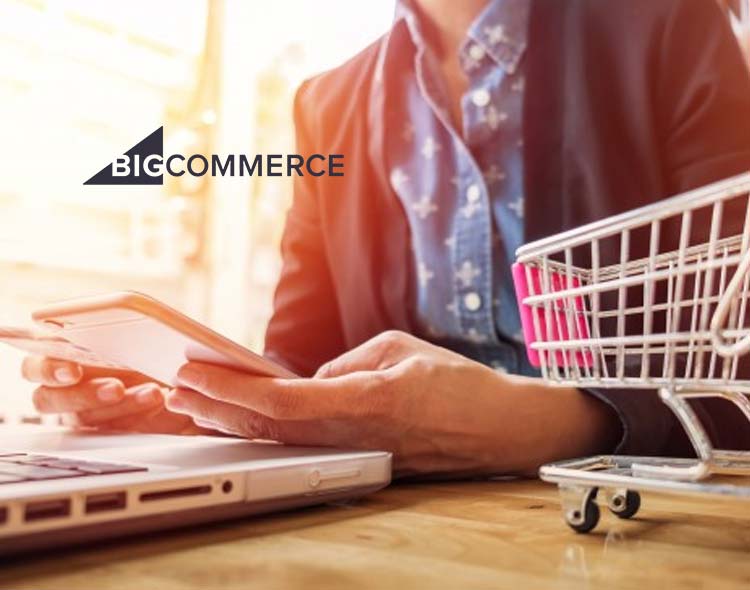Survey results highlight need for retailers to have omnichannel strategies to support customer preferences

Consumer shifts in how and where people buy products evolved significantly during the COVID-19 pandemic, creating new opportunities for retailers to use new channels, fulfillment strategies and payment options, according to the results of a new survey out today from BigCommerce and PayPal.
“The data tells us that 70% of consumers are more likely to spend more at a retailer that offers their preferred payment method1”
While a majority of the 3,000 consumers surveyed from the United States, United Kingdom and Australia said they still prefer in-person shopping, 62.5% of respondents reported doing most of their purchasing online. Close to half said they’re discovering new products on social media at least once a month, and 66.7% of respondents said they’ve made a purchase directly through their phone at least once in the past month.
Read More: Bakkt Expands Reach of the Digital Wallet Experience to Send Digital Assets to Anyone
The findings highlight a growing need for retailers to invest in an omnichannel sales and marketing strategy that provides convenient and consistent shopping experiences in-store, online and on social media.
As customers continue to move away from brick-and-mortar stores to digital commerce and increasingly use their phones to make purchases, an omnichannel strategy opens up the opportunity for retailers to reevaluate their sales and marketing strategies to ensure they’re meeting customers where they are the most likely to spend.
“For years, we’ve seen ecommerce continue to gain ground on traditional shopping. Online and digitized experiences have required retailers to quickly adapt to changing consumer shopping behaviors, and this was expedited in the pandemic,” said Greg Lisiewski, vice president of Global Pay Later Products at PayPal. “Now more than ever, consumers want to be in control of how they pay, and they have a desire for friction-free, seamless digital shopping experiences regardless of which channel they are shopping in.”
Read More: Daily Fintech Series Roundup: Top Fintech News, Analytics and Insights
How people pay for purchases is also changing. More consumers are using digital wallets both in-store and online. Prior to March 2020, digital wallets were the preferred payment option for 28.3% of online shoppers globally, but that jumped to 35.2% after March 2020. The increase for using digital wallets in-store was even greater, going from 12.1% to 22.8%.
“The data tells us that 70% of consumers are more likely to spend more at a retailer that offers their preferred payment method1,” said Mark Rosales, vice president of Business Development, Payments/Banking/Fintech at BigCommerce. “By leveraging this behavioral data, merchants have better means and ability to implement the payment options their customers prefer, ultimately enabling those brands to realize significant sales growth.”
Other key findings:
- While 95.2% of respondents reported making at least one online purchase since March 2020, a slight majority across all regions reported a preference for in-person shopping. Despite that, 32.6% of U.S. respondents, 29.9% of UK respondents and 29.7% of Australian respondents said the convenience of online shopping still trumps any drawbacks, and new options like buy online, pick-up in store (BOPIS) are making it even more attractive.
- As a preferred way to buy, BOPIS has grown substantially since March 2020, with a 373% increase in the U.S., where BOPIS has been slower to catch on compared to other countries.
- The use of digital wallets rose in popularity during the pandemic with a global increase of 24.5% online and 88.7% for in-store purchases since March 2020. Respondents overwhelmingly commented that they’d prefer retailers make digital payment options more available.
- Mid-market merchants are increasingly adopting buy now, pay later (BNPL) solutions for their ecommerce stores with Australia leading the way. Forty-eight percent of Australian merchants, 20% of U.S. merchants and 11% of UK merchants currently offer BNPL options to customers.Consumers seem to fall into two main categories when it comes to using these types of solutions: power users and slow adopters. Globally, 46% say they’ve used a BNPL option at least once in the past three months. However, just 10.1% globally say they’ve used it five or more times in that same time period. In Australia, that number jumps to 15.5%. Fifty-four percent of global respondents — and 60.6% of U.S. respondents — have never used BNPL. Most said they were deterred by incurring fees or debt, or that they simply were not familiar with the option.
- Merchants would be wise to educate consumers on the benefits of buy now, pay later solutions, especially interest-free payment options. Young consumers especially are now accustomed to subscription-based payment models. BNPL financing options fall into this same category.
- Consumers are shopping mainly at large retailers or branded ecommerce stores. Of those polled, 58.2% said they shop at department stores, hypermarkets or big-box retailers, while 31.9% said they purchase directly from the ecommerce stores of their favorite name brands.
Read More: i2c Becomes First Company to be a Visa Fintech Fast Track Member in Four Regions
